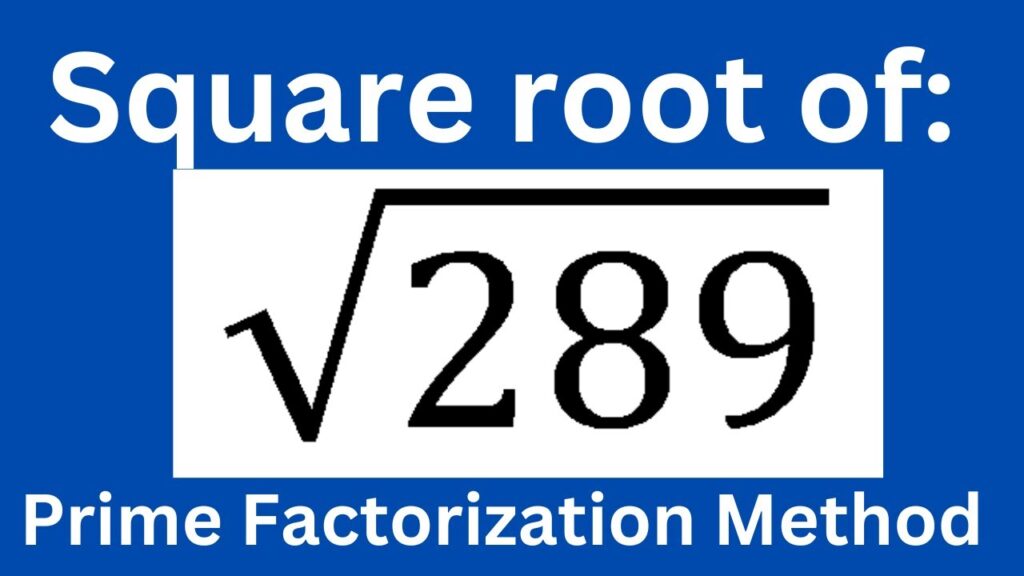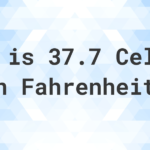What is the Square Root of 289?
The square root of 289 is 17. This means that when you multiply 17 by itself, the result is 289.In mathematical notation, the square root of 289 is written as √289 or 289^(1/2).
Understanding Square Roots
A square root is the inverse operation of squaring a number. When you square a number, you multiply it by itself. For example, 5^2 = 5 × 5 = 25. The square root of 25 is 5 because 5 × 5 = 25.In general, if x^2 = y, then √y = x. This means that the square root of y undoes the squaring operation and gives you the original number x.
Calculating the Square Root of 289
There are several ways to calculate the square root of 289:
- Using a calculator: Most calculators have a square root function denoted by √ or x^(1/2). Simply enter 289 and press the square root button to get the result.
- Using perfect squares: Since 289 is a perfect square (the square of 17), we can immediately conclude that √289 = 17.
- Using prime factorization: We can find the square root of 289 by breaking it down into its prime factors and then grouping them in pairs. 289 = 17 × 17, so √289 = 17.
- Using the long division method: This method involves repeatedly dividing and subtracting to find the square root digit by digit. For 289, the process would be:
text
17 ) 289
- 17
-----
120
- 17
-----
53
- 51
-----
2
The remainder is 2, which means that 17 is the exact square root of 289.
Properties of Square Roots
Here are some important properties of square roots:
- √(x × y) = √x × √y
- √(x / y) = √x / √y
- √(x^n) = x^(n/2)
- √1 = 1
- √0 = 0
Applications of Square Roots
Square roots have many practical applications in various fields:
- Geometry: Square roots are used to calculate the length of the diagonal of a square or rectangle, the radius of a circle given its area, and the area of a circle given its radius.
- Physics: Square roots are used in formulas related to kinetic energy, potential energy, and the period of a pendulum.
- Probability and statistics: The standard deviation, which measures the spread of a dataset, is calculated using square roots.
- Computer science: Square roots are used in algorithms for finding the greatest common divisor and in the calculation of Euclidean distances.
Frequently Asked Questions (FAQs)
- What is the square root of 289?
The square root of 289 is 17. - How do you calculate the square root of a number?
You can calculate the square root using a calculator, by identifying perfect squares, using prime factorization, or by employing the long division method. - Is the square root of 289 a rational number?
Yes, the square root of 289 is a rational number because it can be expressed as the ratio of two integers (17/1). - Can the square root of 289 be simplified?
No, the square root of 289 cannot be simplified further because 289 is already a perfect square. - What is the symbol for square root?
The symbol for square root is √ or x^(1/2). - Is the square root of 289 positive or negative?
The square root of 289 is always positive. The negative square root of 289 is -17. - Can you find the square root of a negative number?
No, you cannot find the square root of a negative number using real numbers. However, in complex number theory, the square root of a negative number is possible. - What is the square root of 289 in simplest radical form?
The square root of 289 in simplest radical form is 17√1. - How do you find the square root of 289 using prime factorization?
To find the square root of 289 using prime factorization, you can break down 289 into its prime factors: 289 = 17 × 17. Since both factors are the same, the square root is 17. - What is the square root of 289 to the nearest whole number?
The square root of 289 to the nearest whole number is 17.
The Mathematical Concept of Square Roots
Definition of Square Roots
The square root of a number x is a value y such that when y is multiplied by itself (squared), it equals x. This is expressed mathematically as:
For example, since 17×17=289, we can say that 289=17.
Properties of Square Roots
Understanding the properties of square roots can help in simplifying expressions and solving equations. Here are some key properties:
- Non-Negativity: The square root of any non-negative number is non-negative. Thus, x≥0 for x≥0.
- Product Property: The square root of a product is equal to the product of the square roots:
a×b=a×b
- Quotient Property: The square root of a quotient is equal to the quotient of the square roots:
ab=ab for b≠0
- Power Property: The square root of a number raised to an exponent can be simplified:
an=an2 for a≥0
- Square of a Square Root: Squaring the square root of a number returns the original number:
(x)2=x
Methods to Calculate Square Roots
There are several methods to calculate square roots, which can be useful depending on the context and the tools available:
1. Estimation Method
For numbers that are not perfect squares, you can estimate the square root by finding the two perfect squares it lies between. For example, to estimate 50:
- 72=49 and 82=64
- Thus, 7<50<8
You can refine your estimate further by averaging or using a calculator.
2. Long Division Method
This method is a manual way to find square roots and can be applied to any number. Here’s a brief overview of how it works:
- Group the Digits: Starting from the decimal point, group the digits in pairs (for example, 289 becomes 2 | 89).
- Find the Largest Square: Find the largest square less than or equal to the first group (2). In this case, 12=1.
- Subtract and Bring Down: Subtract the square from the first group and bring down the next pair (89).
- Double the Root: Double the current root (1 becomes 2) and find a digit d such that (20+d)×d is less than or equal to the current number.
- Repeat: Continue this process until you reach the desired precision.
3. Newton’s Method (Newton-Raphson Method)
This is an iterative numerical method to approximate square roots:
- Start with an initial guess x0.
- Use the formula:
xn+1=12(xn+Sxn)
where S is the number whose square root you want to find.
- Repeat until the desired accuracy is achieved.
Table: Square Roots of Perfect Squares
| Number | Square Root |
|---|---|
| 1 | 1 |
| 4 | 2 |
| 9 | 3 |
| 16 | 4 |
| 25 | 5 |
| 36 | 6 |
| 49 | 7 |
| 64 | 8 |
| 81 | 9 |
| 100 | 10 |
| 121 | 11 |
| 144 | 12 |
| 169 | 13 |
| 196 | 14 |
| 225 | 15 |
| 256 | 16 |
| 289 | 17 |
| 324 | 18 |
| 361 | 19 |
| 400 | 20 |
Additional Resources
For more information on square roots and related mathematical concepts, you can visit the following link:
This comprehensive guide provides insights into the properties, applications, and history of square roots in mathematics. If you have further questions or need additional information, feel free to explore more about this fundamental concept.



